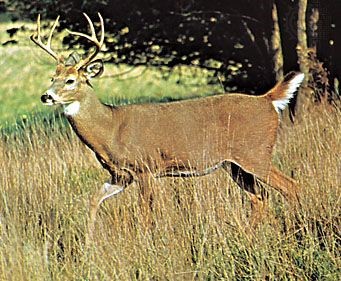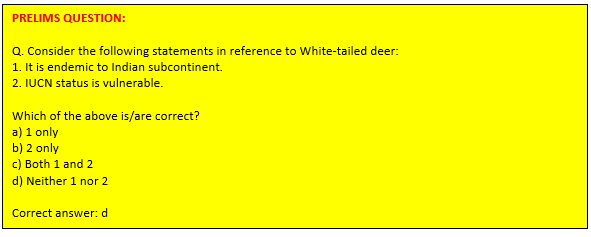WHITE-TAILED DEER

Disclaimer: Copyright infringement not intended.
Context: A study has found widespread infection of white-tailed deer with the SARS-CoV-2 virus across the U.S. State of New York.
Details:
- The researchers found cocirculation of the Alpha, Delta, and Gamma variants in the white-tailed deer, months after they were last detected in humans.
- Of particular concern is the fact that the viral sequences recovered from white-tailed deer were “highly divergent from SARS-CoV-2 sequences recovered from humans”.
- This implies rapid adaptation of the virus in white-tailed deer.
About:
Classification:
- Kingdom: Animalia
- Phylum: Chordata
- Subphylum: Vertebrata
- Class: Mammalia
- Order: Artiodactyla
- Family: Cervidae
- Genus: Odocoileus
- Species: Odocoileus virginianus
Physical Description:
Head and body length is 150 to 200 cm, tail length is 10 to 28 cm, and height at the shoulders is between 80 and 100 cm.
Geographic Range:
Whitetail deer inhabit most of southern Canada and all of the mainland United States except two or three states in the west. Their range reaches throughout Central America to Bolivia.
Habitat:
Whitetail deer are able to survive in a variety of terrestrial habitats, from the big woods of northern Maine to the deep saw grass and hammock swamps of Florida. They also inhabit farmlands, brushy areas and such desolate areas of the west such as the cactus and thornbrush deserts of southern Texas and Mexico. Ideal whitetail deer habitat would contain dense thickets (in which to hide and move about) and edges (which furnish food).
IUCN Status: Least Concern




.jpeg)

1.png)
